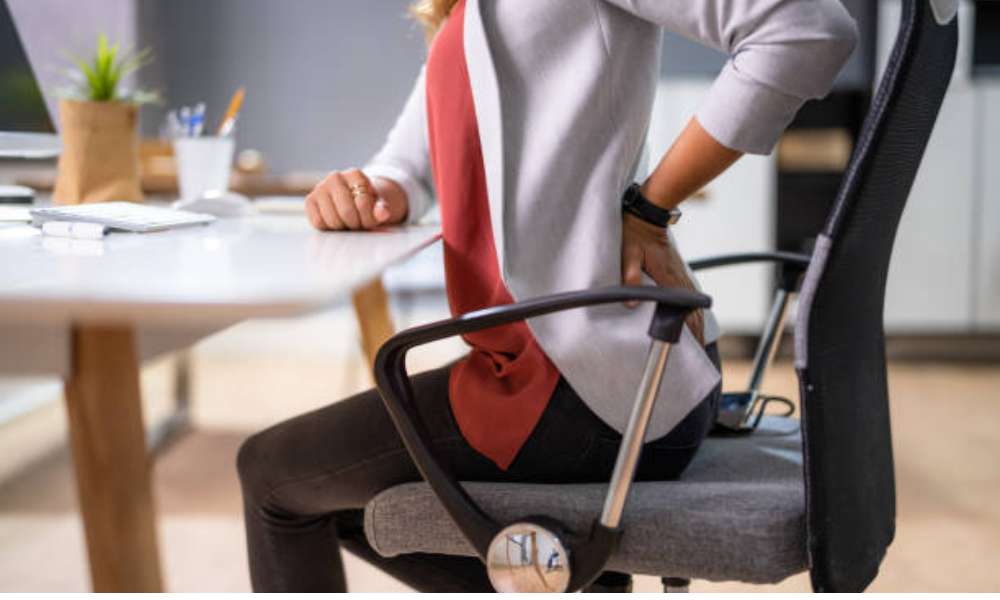Finding relief from the nagging pain of sciatica can feel like an uphill battle, especially when your daily routine involves long hours of sitting. The question on every sufferer’s mind is What chair is best for sciatica The right chair isn’t just about comfort it’s a crucial tool for easing pressure on your lower back, improving posture, and supporting long-term recovery. In this post, we’ll explore the key features to look for, the best chair options for home and office, and why investing in proper seating is essential. Say goodbye to discomfort and hello to a healthier, pain-free sitting experience.
The Role of Proper Seating in Managing Sciatica
Proper seating plays a pivotal role in managing sciatica. When seated for extended periods, the alignment of your spine and pelvis can either relieve or intensify pressure on the sciatic nerve. A chair designed with the needs of sciatica sufferers in mind helps maintain natural spinal curvature, reduces pressure on the lower back, and promotes healthy circulation. Inadequate seating, on the other hand, can compress the lumbar region, exacerbate inflammation, and prolong discomfort. Investing in the right chair isn’t just a luxury—it’s a necessity for long-term health and well-being.
Key Features to Look for in a Chair for Sciatica
Ergonomic Design: Supporting Natural Spinal Alignment
An ergonomic chair is essential for individuals dealing with sciatica. These chairs are crafted to support the natural S-shape of the spine, reducing stress on the lower back. Proper spinal alignment not only prevents slouching but also ensures that the weight is evenly distributed, alleviating pressure on the sciatic nerve. Look for chairs with contoured backrests and a design that mimics the natural curvature of the spine for optimal relief.
Adjustable Features for Personalized Comfort
No two bodies are the same, and an adjustable chair lets in customers to tailor their seating experience to their particular desires. Features along with top adjustment, reclining backrests, and armrest positioning help ensure that the chair fits your frame perfectly. Adjustability complements consolation, reduces stress on pressure factors, and allows customers to maintain a posture that minimizes sciatic nerve inflammation.
Lumbar Support: The Backbone of Sciatica Relief
Lumbar support is arguably the most critical feature for sciatica sufferers. A chair with built-in lumbar support maintains the natural inward curve of the lower spine, preventing it from collapsing into a flat, unsupported position. This support alleviates pressure on the lower back and keeps the spine properly aligned, a crucial factor in managing sciatic pain.
Seat Cushioning: Finding the Right Balance of Softness and Support
Cushioning is often overlooked but plays a significant role in comfort and support. A seat that’s too soft can cause the body to sink, leading to poor posture and increased pressure on the lower back. Conversely, an overly firm seat can be equally uncomfortable. Memory foam or gel-infused cushions strike a perfect balance, offering both comfort and the support necessary to reduce pressure on the sciatic nerve.
Types of Chairs Suitable for Sciatica Relief
Office Chairs Designed for Sciatica Sufferers
Modern office chairs often come equipped with ergonomic features tailored for extended sitting. Look for models with adjustable lumbar support, a breathable mesh back, and a waterfall-edge seat that reduces pressure on the thighs. These features collectively contribute to alleviating sciatic pain, especially for individuals who work long hours at a desk.
Recliners with Lumbar Support for Home Use
For domestic relaxation, recliners with integrated lumbar support are a great preference. These chairs assist you to recline whilst retaining proper spinal alignment, decreasing pressure at the decreased back. Some models even feature warmth or rubdown functions, which could similarly relieve sciatica signs and symptoms and enhance stream.
Kneeling Chairs: An Alternative Approach to Sitting Comfortably
Kneeling chairs provide a completely unique seating position that shifts weight from the returned to the thighs and knees, promoting better posture and reducing pressure at the lower backbone. While unconventional, these chairs may be a sensible answer for sciatica sufferers looking for to reduce stress on the sciatic nerve.
Symptoms of Sciatica and the Impact of Poor Seating
Sciatica symptoms range from sharp pain and tingling to numbness that travels down the leg. Poor seating exacerbates these issues by increasing pressure on the lumbar region and restricting blood flow. Prolonged use of an unsupportive chair can lead to chronic pain, muscle imbalances, and even permanent nerve damage. Understanding the connection between seating and symptoms is the first step toward choosing a chair that promotes relief and healing.
The Long-Term Consequences of Using an Unsupportive Chair
Using an unsupportive chair doesn’t just worsen sciatica—it can also lead to a host of other health problems. Chronic poor posture can result in herniated discs, spinal misalignment, and weakened core muscles. Over time, these issues can compound, making recovery from sciatica even more challenging. Investing in a high-quality chair isn’t just about immediate comfort—it’s about safeguarding your long-term spinal health.
FAQs
Can the right chair completely cure sciatica?
Ans: While a suitable chair can significantly alleviate symptoms, sciatica often requires a combination of treatments, including physical therapy, exercise, and medical intervention.
How do I know if a chair is suitable for sciatica?
Ans: Look for features such as lumbar support, ergonomic design, and adjustable components. Testing the chair for comfort and support before purchasing is also helpful.
Are standing desks better for sciatica than sitting chairs?
Ans: Standing desks can be a good alternative for reducing prolonged sitting, but they should be used in conjunction with ergonomic seating to allow for positional variety.
Conclusion
Finding the best chair for sciatica is about more than just comfort it’s about creating an environment that supports healing and prevents further strain. By focusing on ergonomic design, lumbar support, and adjustability, you can choose a chair that promotes better posture and alleviates pain. Remember, investing in the right chair is an investment in your overall well-being and long-term spinal health. Prioritize your comfort and take a step toward a pain-free life.

